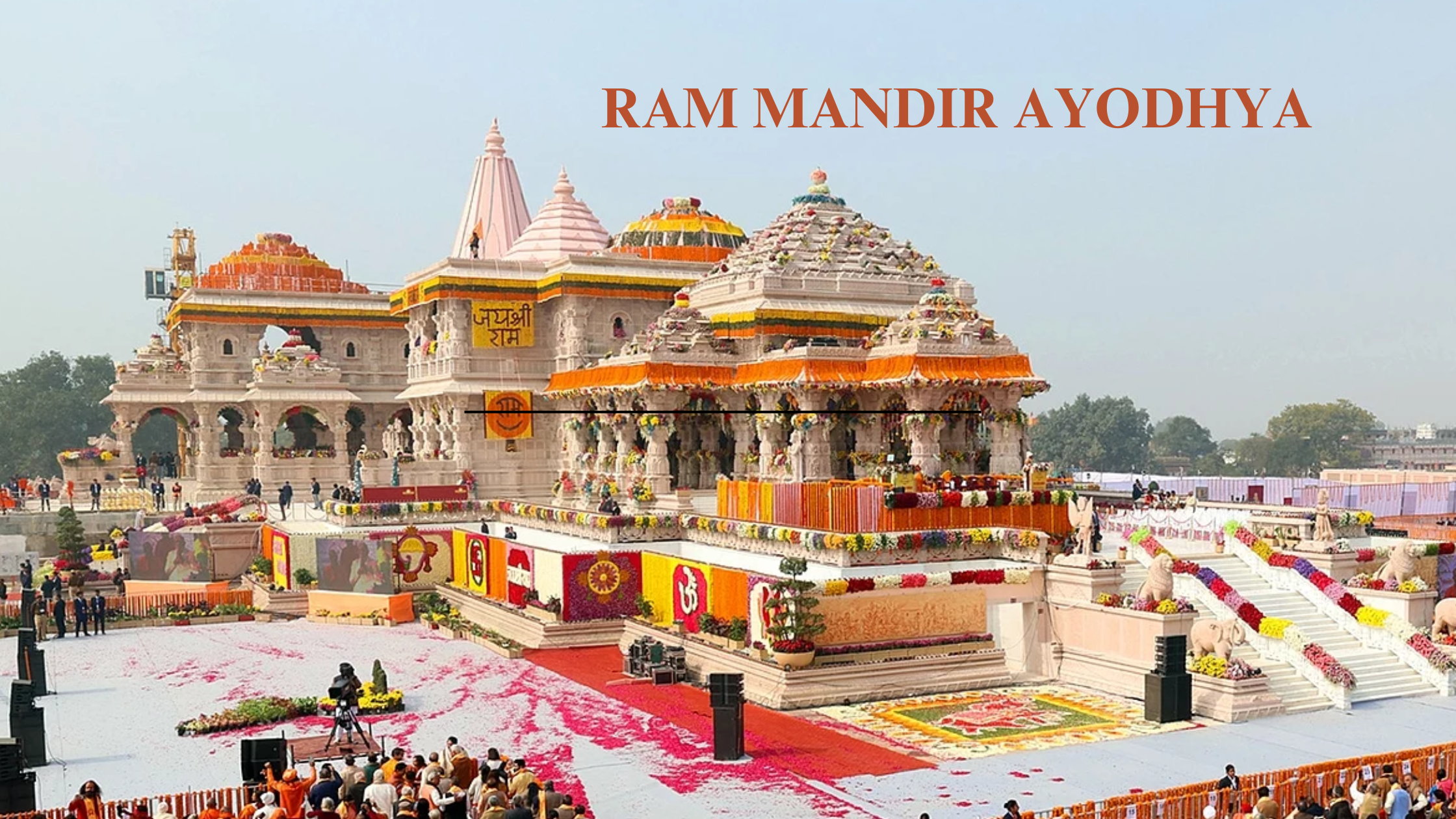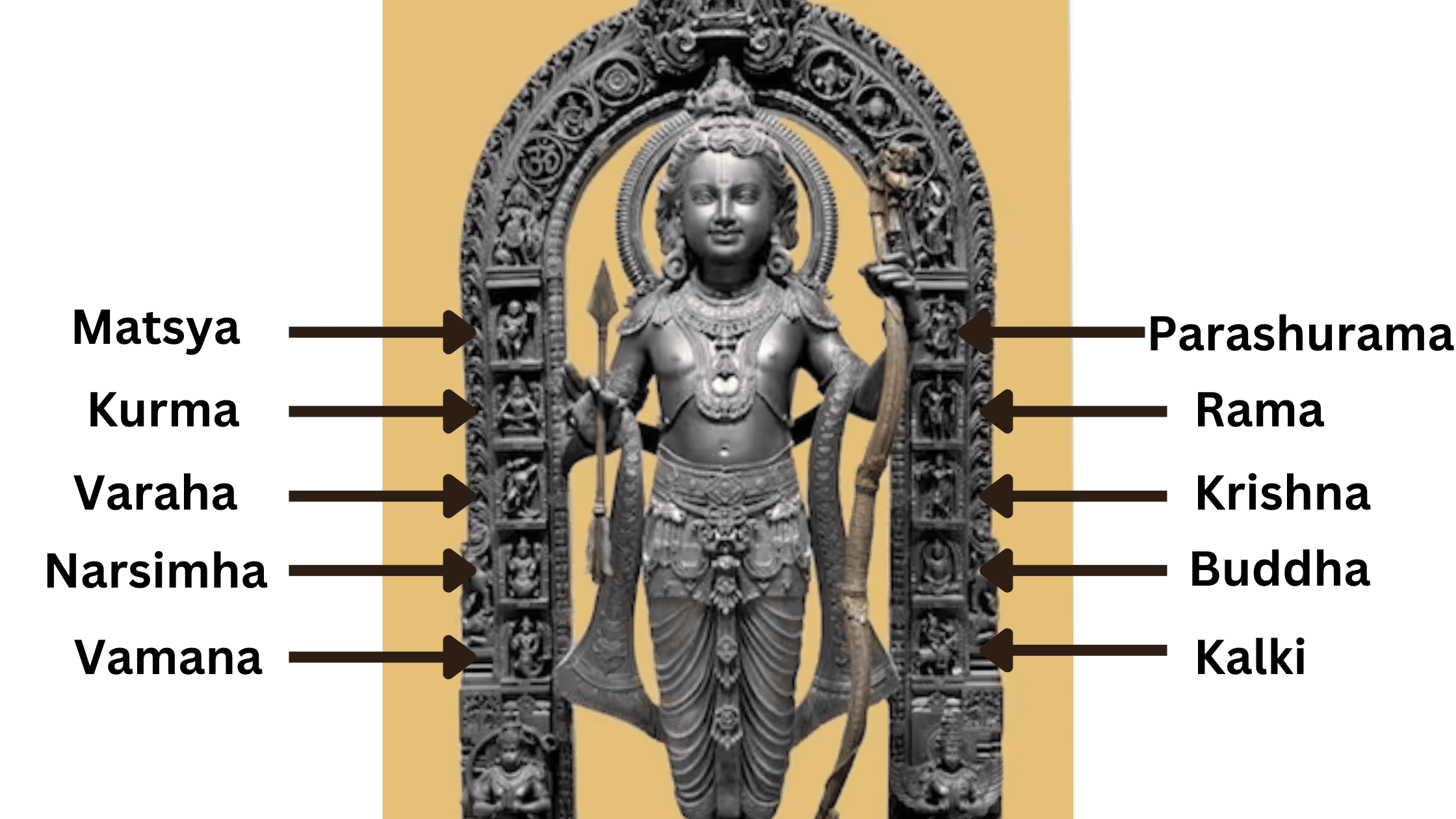10 Avatars or Dashavatara in Shri Ram Lalla Idol in Ayodhya
Know the significance of Shri Ram Lalla idol along with the religious importance of dashavataras present in it.

Jai Siya Ram Bhakton! In the heart of Ayodhya, stays a divine emotional connection of bhakts for Shri Ram Ji! The Ram Lalla idol in Ayodhya was created with faith and devotion. The idol, lovingly known as Ram Lalla, holds a deep secret within its detailed carvings.
It is a representation of the ten avatars of Lord Vishnu, known as the “Dashavatara”.
In this blog, we will get to know about the craftsmanship, and the significance of the Ram Lalla idol in Ayodhya. Our blog will also cover the Dashavatara present in Shri Ram Lalla Idol in Ayodhya.
Chat With our Top astrologer

Shri Ram Lalla Idol in Ayodhya
The Ram Lalla idol in Ayodhya holds immense cultural and religious importance. Devotees praise the childhood of Bhagwan Shri Ram also known as ‘Balak Ram’, which resembles Ram Ji as a 5 years old child. The Ram Lalla idol has become the focus point of the Ram Janmabhoomi.
Who Made The Ram Lalla Idol In Ayodhya?
The artistry behind the Ram Lalla Idol is tempting and mesmerising. The Balak Ram idols are crafted by Arun Yogiraj, Satyanarayan Pandey and Ganesh Bhatt. One Ram Lalla idol is in the sanctum sanctorum while the other two are at different places in the Ram mandir.
Arun Yogiraj, who is from Mysuru, Karnataka, crafted the Ram Lalla idol with dignity and royalty at its finest! The skilled artisans of Ayodhya, driven by their faith, and spiritual dedication towards Shree Ram Ji, efficiently carved the Ram Lalla idol.
Material and Craftsmanship of Ram Lalla Idol In Ayodhya
The Ram Lalla idol is made by artists of Ayodhya by giving their dedication and skills. The Balak Ram idol, made from a unique blend of sacred materials, reflects the traditional techniques and expertise of Ayodhya’s skilled artisans.
Artisans made the Balak Ram idol from the black rock which is believed to be three billion years old. The Krishna Shila, or black schist, is used to make Shri Ram Lalla idol. Krishna Shila is also identical to the colour of Lord Krishna. It was extracted by Gujjegowdanapura which is in Jayapura Hobli, and it is located in H.D. Kote Taluk of Mysuru. This sky blue coloured rock has a smooth surface texture.
If we talk about the dress worn by Shri Ram Lalla ji, then it includes a yellow colour dhoti along with a red Angavastram or Pataka which is made of Banarasi fabric. Shri Ram Lalla Ji is wearing a number of jewelleries that includes Vijayamala, Kaustubha Mani, Kanchi, and more. The silver red tilak on Shri Ram Lalla includes pure rubies and diamonds.
The 51 inch Ram Lalla idol showcases the dedication of the craftsmen in preserving the sanctity of Lord Rama’s divine form.

10 Avatars or Dashavatara in Shri Ram Lalla Idol
The uniqueness of Shri Ram Lalla Idol in Ayodhya lies gracefully engraved Dashavatara, the ten avatars of Lord Vishnu. Each avatar holds a distinct symbol and relevance in Hindu religion. Let’s explore each of these avatars and its significance:
Matsya Avatar (Fish)
The first avatar, Matsya of Lord Vishnu, saved the world from destruction. He killed the rakshasa Hayagriva who is also known as the God of Wisdom because he stole the vedas from Lord Brahma. The Matsya avatar came in Satya Yuga as half a human with the lower body of a fish.
Kurma Avatar (Tortoise)
The second avatar, Kurma of Lord Vishnu, served as the base for Mount Mandarachal during the disturbance of the cosmic ocean. The Kurma avatar came in Satya Yuga as a half tortoise and half human.
Varaha Avatar (Boar)
The third avatar, Varaha which came as a wild boar signifies the rescue of the Earth from the demon Hiranyaksha. Emerging from the depths of the earth, Varaha rescued the goddess Prithvi.
Narsimha Avatar (Man Lion)
The fourth avatar, Narsimha was incarnated from a pillar to kill the demon king Hiranyakashipu to save his devotee Prahlad. The Narsimha avatar came in Satya Yuga as a half lion and half human.
Vamana Avatar (Dwarf Brahmin)
The fifth avatar, Vamana is the powerful avatar who tricked and killed the rakshasa King Mahabali. By measuring the earth and sky, Vamana tricked the demon by placing his leg on Mahabali’s head and sending him to the underworld.
Parshuram Avatar (Kshatriya Brahmin)
The sixth avatar Parshuram, who is also known as Brahmin Kshatriya, symbolises the destruction of evil and the restoration of dharma. Also, he killed Sahastrarjuna and destroyed all the Hayavanshi Kshatriyas.
Shri Ram Avatar (Prince)
The seventh avatar, Shri Ram, was born to Mata Kaushalya and Raja Dasharatha in Ayodhya. He was incarnated to establish dignity and religion in the world. He is known worldwide for his ultimate devotion to dharma.
Shri Krishna Avatar (God)
The eighth avatar, Shri Krishna, played a pivotal role in the Mahabharata, guiding humanity towards dharma and dispelling darkness. Shri Krishna killed Kansa along with other Rakshasa. Also, he helped Pandavas to destroy the Kaurava dynasty to spread wellness, and religion supremacy around the world.
Buddha Avatar
The ninth avatar, Gautam Buddha emphasises compassion and nonviolence to spread humanity from the cycle of love and death. Gautam Buddha founded Buddhism which preaches the path of enlightenment.
Kalki Avatar
The tenth avatar, Kalki will appear at the end of Kali Yuga and restore wellness to the world. The Kalki bhagwan will come in Kali Yuga as riding a white horse is believed to bring an end to the age of darkness.

Shri Ram Lalla Pran Pratishtha in Ayodhya
The consecration of the Ram Lalla Idol, known as Shri Ram Lalla Pran Pratishtha, is a sacred ritual that infuses life into the idol. This ceremony was performed on 22nd January 2024 and included the installation of the idol in its sanctum sanctorum.
Devotees believe that through this ritual, Lord Rama’s divine presence becomes tangible, strengthening a deep connection between the deity and the worshipers.
Visit us at VAMA to discover more spiritual knowledge of Shri Ram Ji.
Frequently Asked Questions
- Why does the Ram Lalla Idol depict Dashavatara?
The Dashavatara represents the various incarnations of Lord Vishnu, showcasing his cosmic role in preserving dharma and maintaining balance in the universe. The inclusion of Dashavatara in the Ram Lalla Idol emphasizes Balak Ram’s divinity.
- How old is the Ram Lalla Idol in Ayodhya?
Devotees praise the childhood of Bhagwan Shri Ram also known as ‘Balak Ram’, which resembles Ram Ji as a 5 years old child.
- Why is Ram Lalla idol black in colour?
Shri Ram Lalla Idol in Ayodhya is made from black rock which is in the districts of Mysuru. This stone is black in colour and is also known as Krishna Shila.





